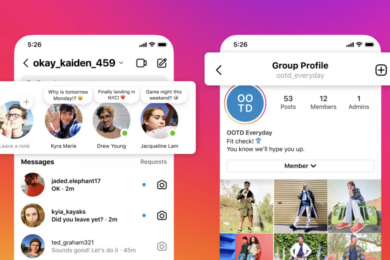
Conversions come with a cost, and that cost is content.
“Content” has become a sacred word in the land of marketing, branding, and overall business – and the #1 driver of conversions. As society’s screen time increases, the amount of opportunities for conversions are on the steady incline.
So, to aid in your content strategy, here’s a couple of factors to consider:
What Is A Conversion?
Before leaning into content strategies for conversions, it’s important to thoroughly understand what constitutes as a conversion. A conversion, in the business context, is a lead that transitions into a viable opportunity for a sale. For example, a social media user can be converted from a follower to a viable opportunity by simply clicking on the link to one of your social media posts. Whether the conversion leads to a sale or simply a new contact, a conversion is the ultimate goal for all content created.
Relevance
How do videos and memes go viral? Is it their artistic quality? Color contrasts? Not even close.
People engage with content that’s applicable, and most relatable, to them. Majority of viral memes and videos that we all know and love are low in quality and poorly captured. The share-ability of your content is less about perfection and largely about social relevance. Whether you’re weighing into the political climate or taking a humorous approach to a social issue, making your content relevant invites your audience to quickly connect with your content – and increases the chances of them taking an action.
Value
What value does your content offer to your audience? One of the most successful approaches to content creation is ‘thought leadership’. Since one of the primary causes for conversion failure is lack of trust between a consumer and a seller, it’s important to position yourself as a knowledgable leader in your industry.
Some trending ways to reflect this in your content strategy is by offering free resources like tips, guides, and answers to some of your audience’s most beaming questions – questions only experts know the answer to. The more value you invest in your audience, the more value ($$) they’ll invest in you.
Comprehensive CTA’s
We’re just going to say it: People are are lazy (yes, including you). The average consumers’ attention span is only eight seconds. This means that in order to optimize your chances of converting your content’s viewers, you must make it as easy and quick as possible for users to take an action.
Quick & Easy CTA Ideas:
- Video Content: Embed website links in videos, utilizing in-screen cards and end screens within your video
- Social Media Content: Add shortened web links to the end of each post
- Email Content: Utilize hyperlinks and buttons within your email copy
Hopefully this gives you some innovative ideas when creating your next content campaign.
NEED HELP WITH YOUR NEXT CONTENT STRATEGY?
- Email us at contact@branditstrategies.com
- Call us at (202) 599-5358
- Fill out the form below


















